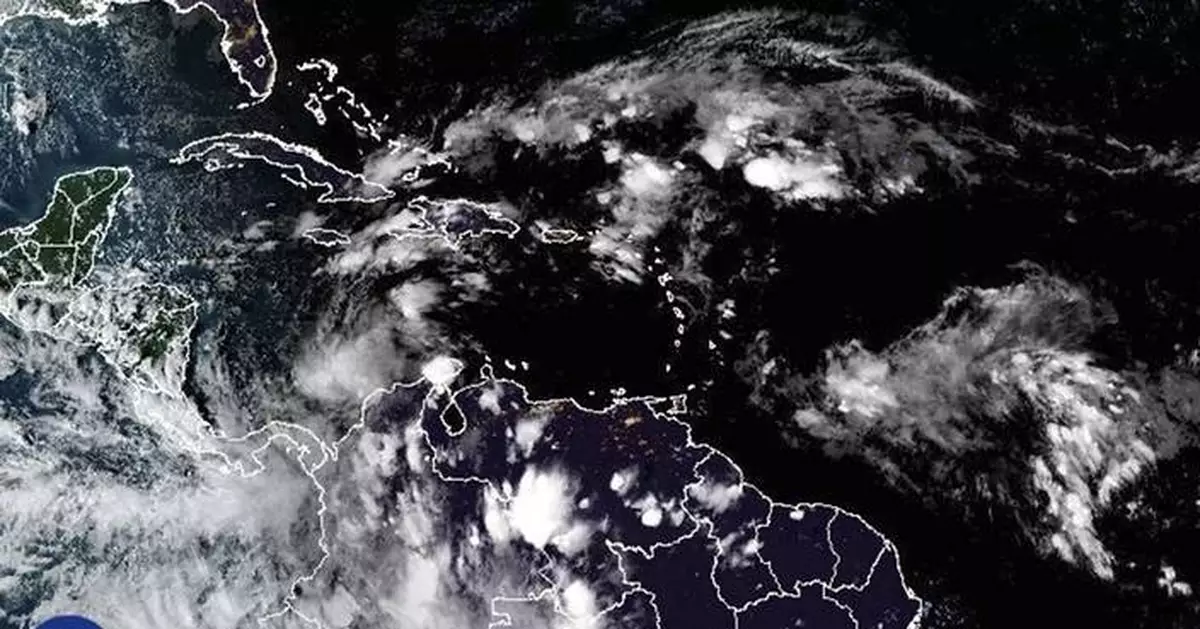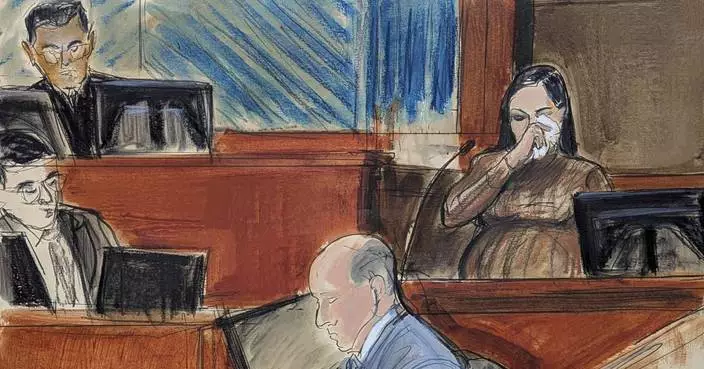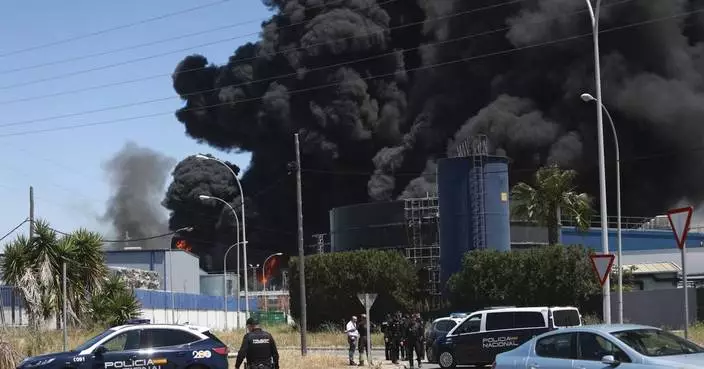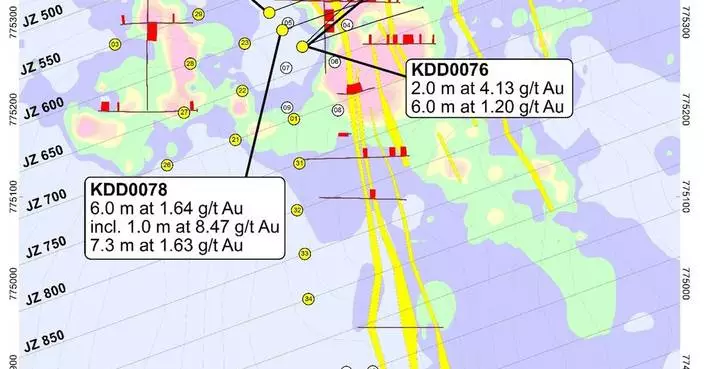MIAMI (AP) — A hurricane watch for the Cayman Islands and a tropical storm warning for Jamaica were issued as a weather system in the Caribbean is expected to strengthen this week, the National Hurricane Center in Miami said.
On the opposite side of the Atlantic, Patty transitioned from subtropical to a tropical storm located about 380 miles (615 kilometers) east of the Azores early Monday, the hurricane center reported.
The northwestern Caribbean storm system was expected to become a hurricane and could bring heavy rainfall to Cuba and Florida and possibly the northern coast of the Gulf of Mexico later this week, the center said early Monday morning.
“Potential Tropical Cyclone Eighteen” was located about 275 miles (445 kilometers) south of Kingston, Jamaica, and about 465 miles (745 kilometers) southeast of Grand Cayman in the Cayman Islands. The storm had maximum sustained winds of 35 mph (55 kph) while moving north at 6 mph (9 kph), the center said.
A hurricane is defined as a tropical cyclone with maximum sustained surface winds of 74 mph (119.1 kph) or greater. A tropical storm has maximum sustained winds of 39 mph (62.8 kph) up to 73 mph (117.5 kph).
The storm was expected to be near Jamaica by late Monday and the Cayman Islands on Tuesday and Wednesday, according to the center, which urged residents in Cuba and the Florida Keys to monitor the storm's progress.
Heavy rainfall will affect the western Caribbean with totals of 3 to 6 inches (76 to 152 mm) and up to 9 inches (229 mm) expected locally in Jamaica and southern Cuba. Flooding and mudslides are possible in those nations.
Heavy rains will reach Florida and adjacent areas of the southeast U.S. by mid- to late-week, the center said.
Tropical Storm Patty had maximum sustained winds of 45 mph (75 kph) while moving east at 20 mph (31 kph), the hurricane center said, noting in a 3 a.m. advisory that Patty is forecast to become post-tropical in the coming days near the Azores, an island chain about 800 miles (1,287 kilometers) off Portugal.
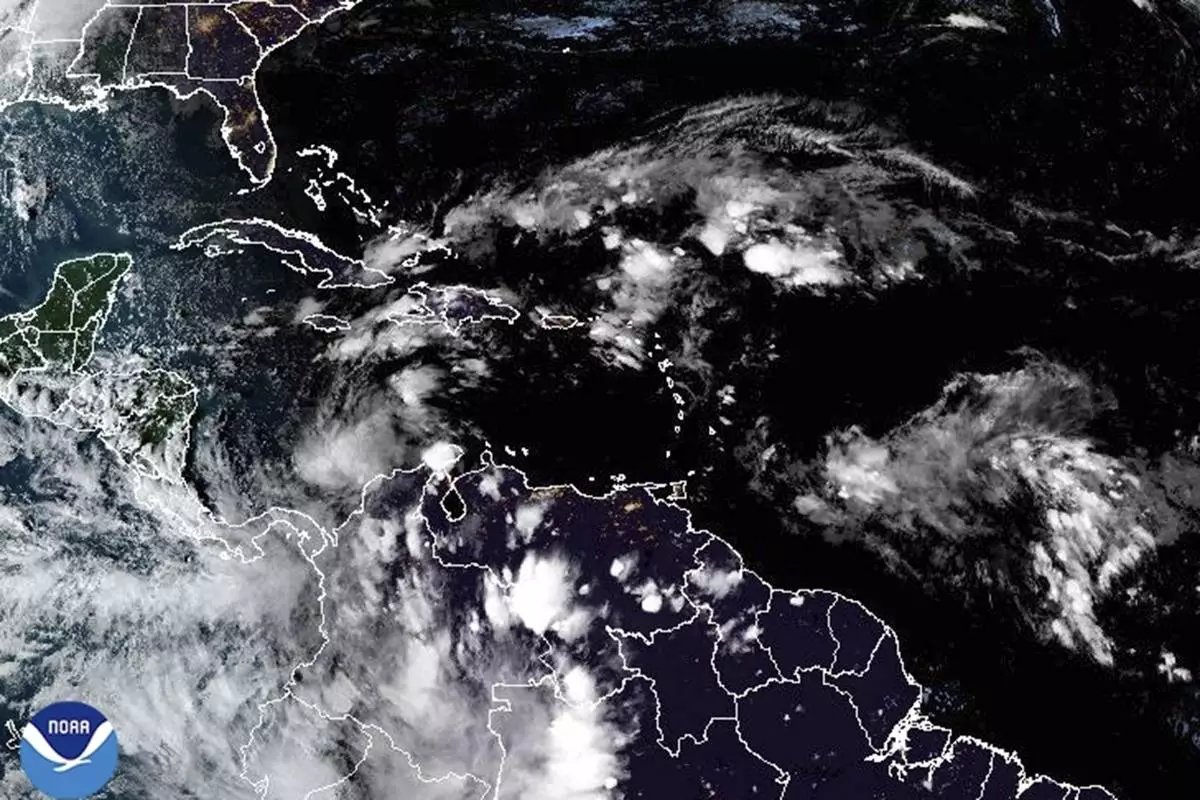
This satellite image provided by NOAA shows weather systems Sunday, Nov. 3, 2024. (NOAA via AP)
NEW YORK (AP) — U.S. stocks are drifting Thursday following a jumble of mixedreports that shed little clarity on how the U.S. economy is managing through President Donald Trump’s trade war.
The S&P 500 was 0.2% lower in early trading and potentially on track for its first drop of the week. The Dow Jones Industrial Average was down 179 points, or 0.4%, as of 9:35 a.m. Eastern time, and the Nasdaq composite was 0.4% lower.
Treasury yields also sank in the bond market following the reports, with the headliners saying shoppers spent less at U.S. retailers last month than expected, while inflation was better at the wholesale level than economists expected. Other updates said U.S. manufacturing looks like it’s still contracting but fewer U.S. workers are applying for unemployment benefits than expected.
Altogether, the reports suggested the Federal Reserve may have more room to cut interest rates later this year to bolster the U.S. economy if it weakens under the weight of high tariffs. But they did little to spell out whether the economy is falling toward a recession, as many investors had been fearing, or shaking off the uncertainty after Trump called off many of his tariffs temporarily.
Such uncertainty showed itself in Walmart’s stock, which fell 3.8% even though it reported a bigger profit for the latest quarter than analysts expected.
Like other U.S. companies struggling with the uncertainty caused by Trump’s on-again-off-again rollout of tariffs, Walmart did not offer a forecast for how much profit it will make in the current quarter, though it did say it expects sales to grow between 3.5% and 4.5%, not including the swings that shifting values of foreign currencies can bring.
The nation’s largest retailer also said that it must raise prices due to higher costs caused by Trump’s tariffs.
Elsewhere on Wall Street, Dick’s Sporting Goods tumbled 12.2% after it said it would buy the struggling Foot Locker chain for $2.4 billion. Dick’s also said that it made a better profit for the latest quarter than analysts expected.
Foot Locker soared 83% after coming into the day with a loss of nearly 41% for the year so far.
It’s the second buyout of a major footwear company in as many weeks as business leaders struggle with uncertainty over how Trump’s tariffs will impact companies that make many of their products overseas. Last week Skechers announced that it was being taken private by 3G Capital for $9 billion.
In the oil market, crude prices sank more than 2% on expectations that more petroleum could be set to flow into global markets because of a possible deal between the United States and Iran on the Middle Eastern country’s nuclear program. Such a deal would help pave the way to ease sanctions against Tehran.
Elsewhere, China moved to reverse some of its “non-tariff” measures against the U.S. as agreed with Washington in their temporary trade war cease-fire, while demanding that the U.S. side “immediately correct its wrong practices.”
A Chinese Commerce Ministry spokesperson accused the Trump administration of violating world trade rules by announcing that use of Ascend computer chips made by China’s Huawei Technologies violates U.S. export controls.
Stock indexes fell 0.8% in Hong Kong and 0.7% in Shanghai, while indexes were mixed elsewhere in Asia and in Europe.
In the bond market, the yield on the 10-year Treasury fell to 4.48% from 4.53% late Wednesday.
The two-year Treasury yield dropped to 3.98% from 4.05% as expectations built among traders that the Fed will resume cutting its main interest rate as soon as September.
The Fed has been keeping interest rates on hold this year as it waits to see the effects of Trump’s trade policies. Cutting interest rates would help juice the economy by making it easier for U.S. households and companies to borrow and spend. But it would also push upward on inflation when worries are high that Trump’s tariffs will do the same thing.
AP Business Writers Matt Ott and Elaine Kurtenbach contributed.
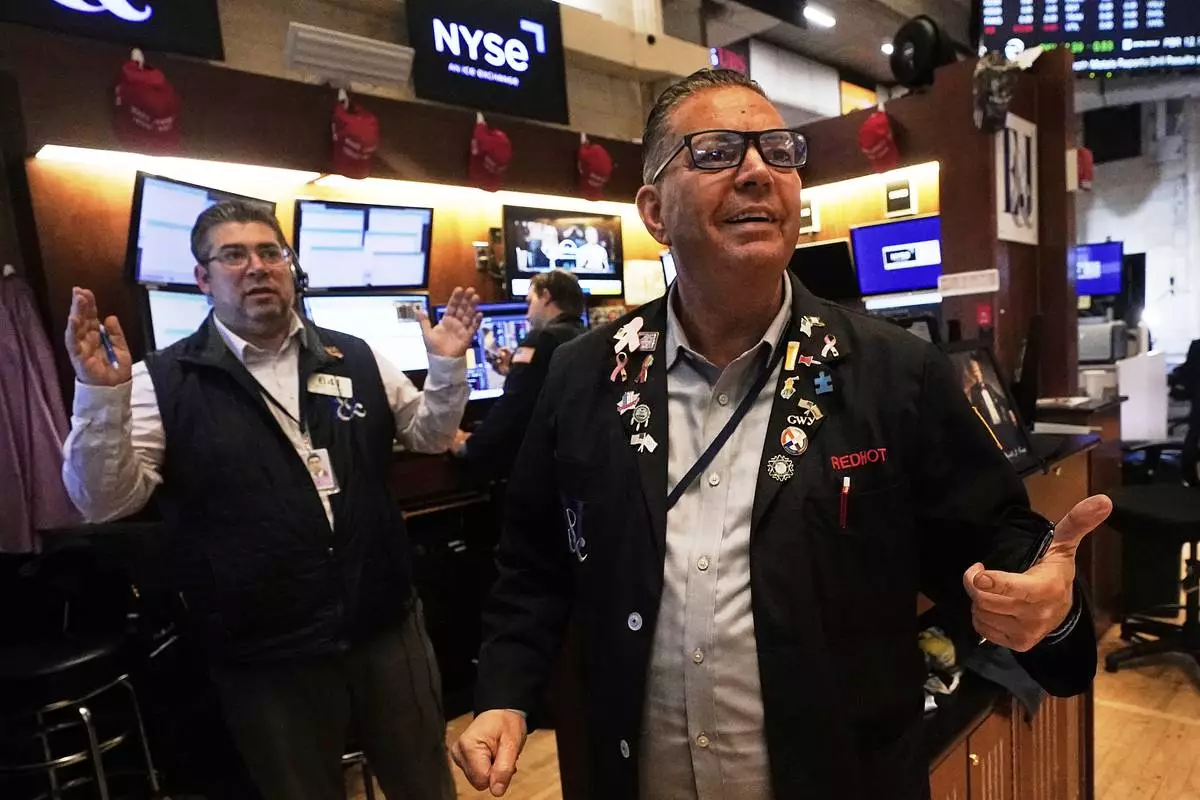
Traders Jonathan Mueller, right, and Michael Capolino work on the floor of the New York Stock Exchange, Wednesday, May 14, 2025. (AP Photo/Richard Drew)
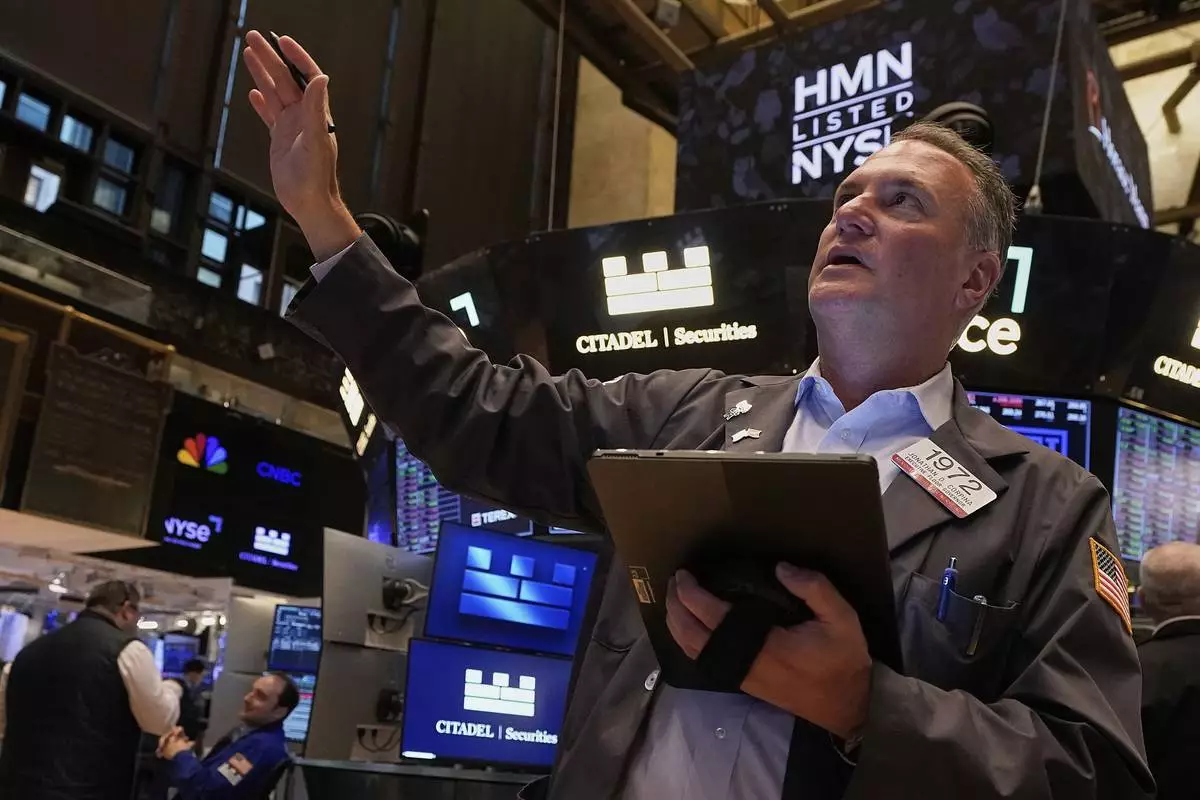
Trader Jonathan Corpina works on the floor of the New York Stock Exchange, Wednesday, May 14, 2025. (AP Photo/Richard Drew)
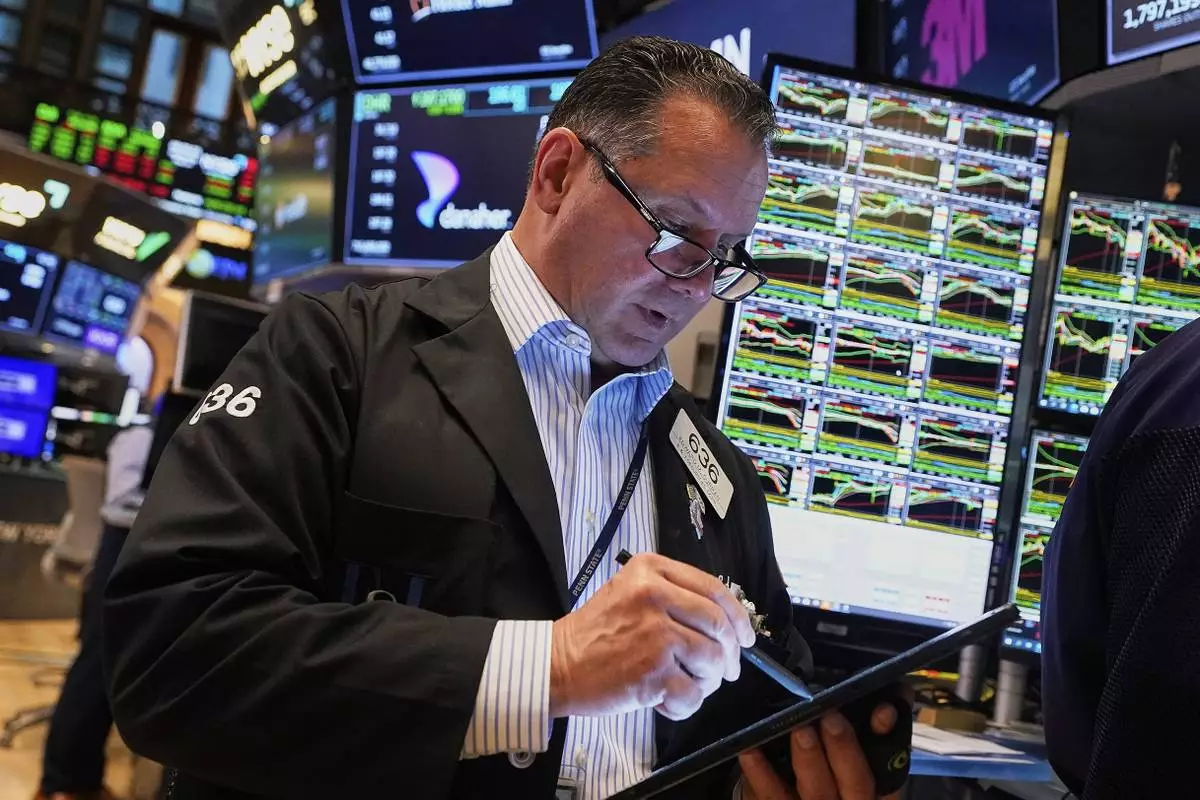
Trader Edward Curran works on the floor of the New York Stock Exchange, Wednesday, May 14, 2025. (AP Photo/Richard Drew)
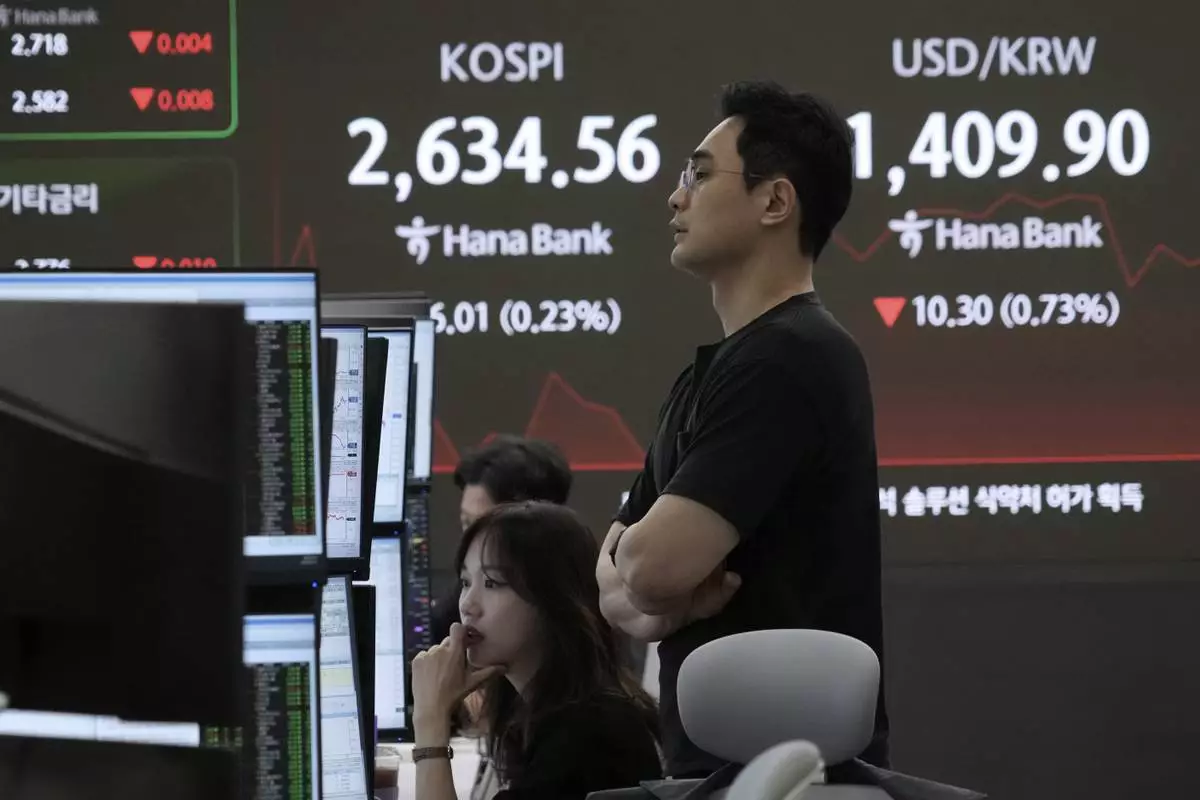
Currency traders watch monitors near a screen showing the Korea Composite Stock Price Index (KOSPI) and the foreign exchange rate between U.S. dollar and South Korean won, top right, at the foreign exchange dealing room of the KEB Hana Bank headquarters in Seoul, South Korea, Thursday, May 15, 2025. (AP Photo/Ahn Young-joon)
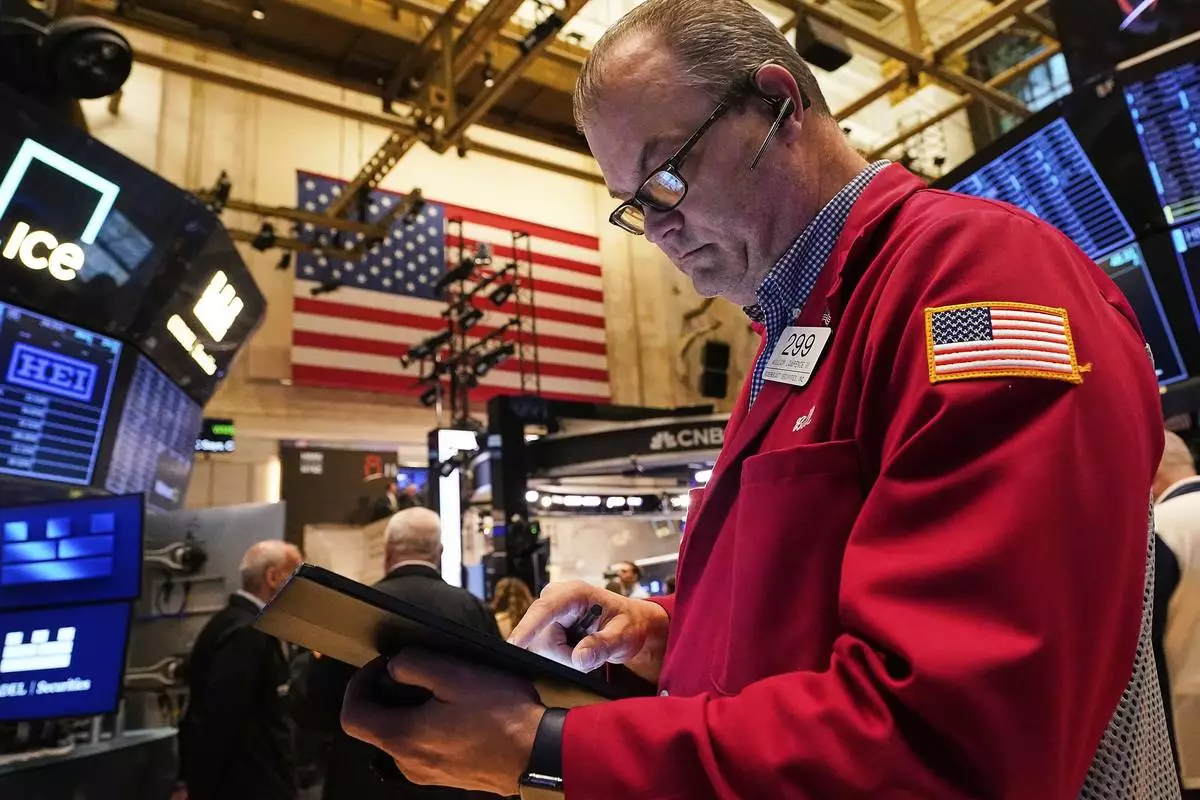
Trader William Lawrence works on the floor of the New York Stock Exchange, Wednesday, May 14, 2025. (AP Photo/Richard Drew)
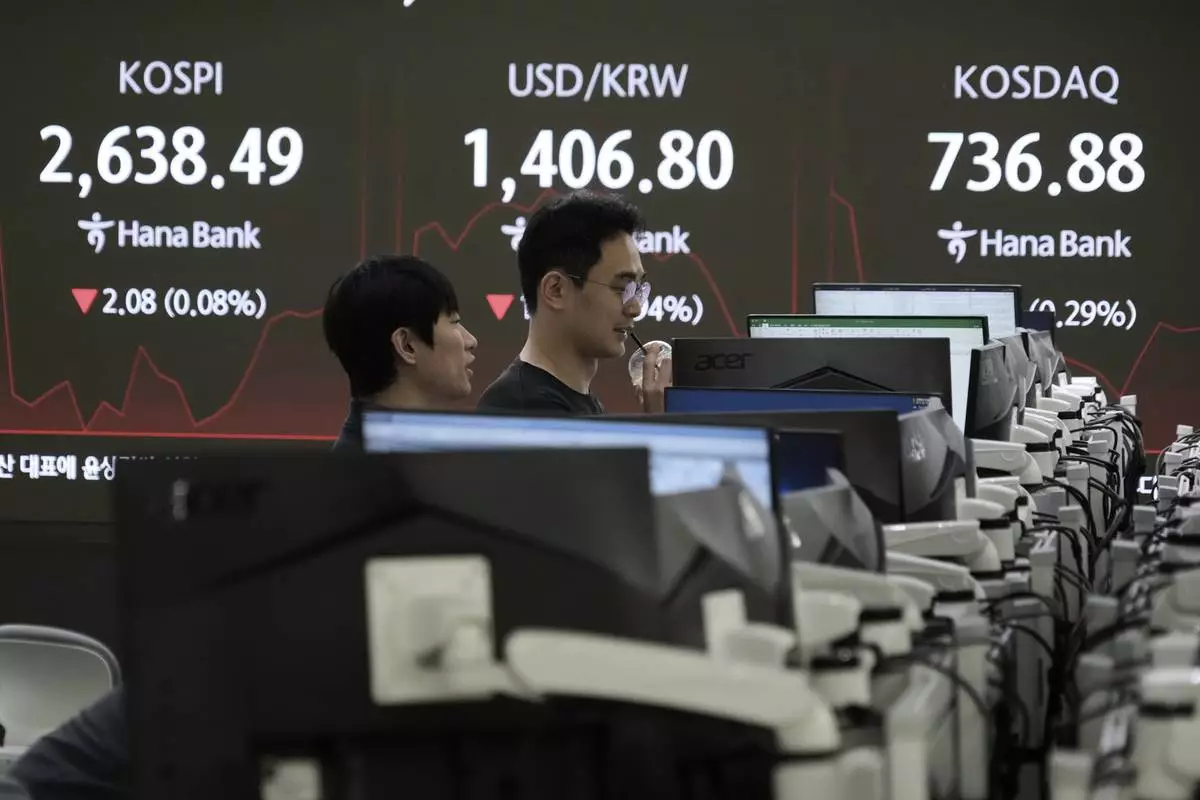
Currency traders watch monitors near a screen showing the Korea Composite Stock Price Index (KOSPI), top left, and the foreign exchange rate between U.S. dollar and South Korean won, top center, at the foreign exchange dealing room of the KEB Hana Bank headquarters in Seoul, South Korea, Thursday, May 15, 2025. (AP Photo/Ahn Young-joon)

Currency traders watch monitors near a screen showing the Korea Composite Stock Price Index (KOSPI) in Seoul, South Korea, Thursday, May 15, 2025. (AP Photo/Ahn Young-joon)



